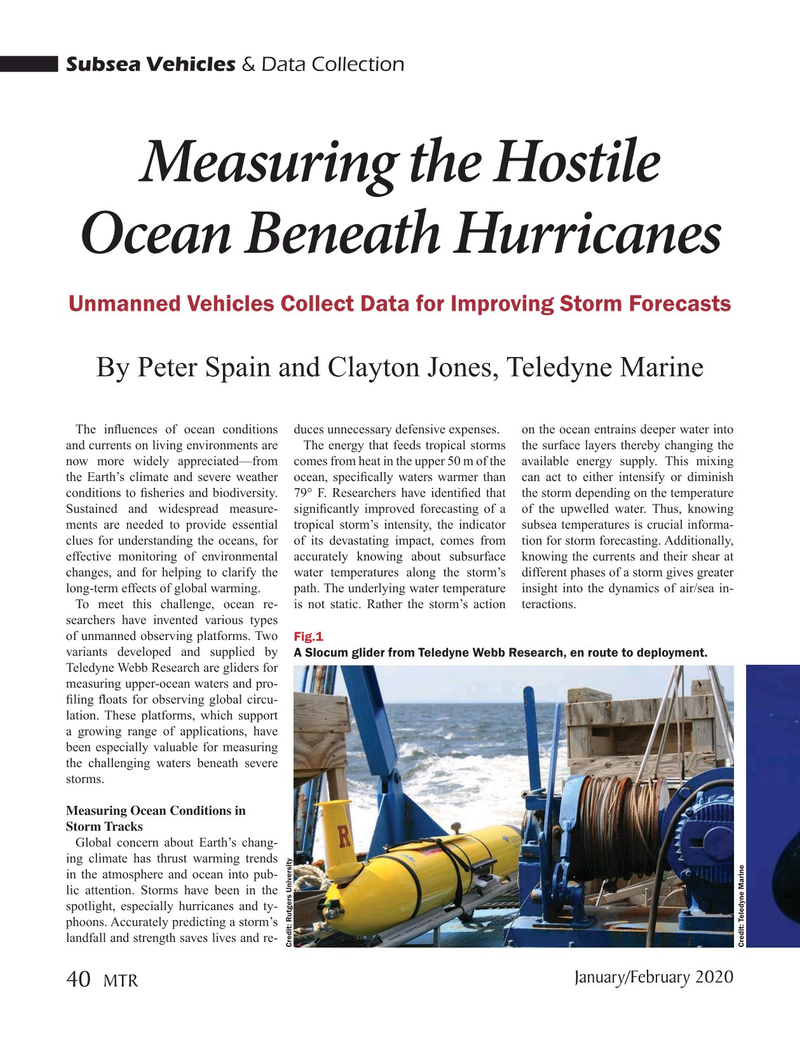
Page 40: of Marine Technology Magazine (January 2020)
Read this page in Pdf, Flash or Html5 edition of January 2020 Marine Technology Magazine
Subsea Vehicles & Data Collection
Measuring the Hostile
Ocean Beneath Hurricanes
Unmanned Vehicles Collect Data for Improving Storm Forecasts
By Peter Spain and Clayton Jones, Teledyne Marine
The in? uences of ocean conditions duces unnecessary defensive expenses. on the ocean entrains deeper water into and currents on living environments are The energy that feeds tropical storms the surface layers thereby changing the now more widely appreciated—from comes from heat in the upper 50 m of the available energy supply. This mixing the Earth’s climate and severe weather ocean, speci? cally waters warmer than can act to either intensify or diminish conditions to ? sheries and biodiversity. 79° F. Researchers have identi? ed that the storm depending on the temperature
Sustained and widespread measure- signi? cantly improved forecasting of a of the upwelled water. Thus, knowing ments are needed to provide essential tropical storm’s intensity, the indicator subsea temperatures is crucial informa- clues for understanding the oceans, for of its devastating impact, comes from tion for storm forecasting. Additionally, effective monitoring of environmental accurately knowing about subsurface knowing the currents and their shear at changes, and for helping to clarify the water temperatures along the storm’s different phases of a storm gives greater long-term effects of global warming. path. The underlying water temperature insight into the dynamics of air/sea in-
To meet this challenge, ocean re- is not static. Rather the storm’s action teractions. searchers have invented various types of unmanned observing platforms. Two Fig.1 variants developed and supplied by A Slocum glider from Teledyne Webb Research, en route to deployment.
Teledyne Webb Research are gliders for measuring upper-ocean waters and pro- ? ling ? oats for observing global circu- lation. These platforms, which support a growing range of applications, have been especially valuable for measuring the challenging waters beneath severe storms.
Measuring Ocean Conditions in
Storm Tracks
Global concern about Earth’s chang- ing climate has thrust warming trends in the atmosphere and ocean into pub- lic attention. Storms have been in the spotlight, especially hurricanes and ty- phoons. Accurately predicting a storm’s landfall and strength saves lives and re-
Credit: Rutgers University
Credit: Teledyne Marine
January/February 2020 40
MTR
MTR #1 (34-49).indd 40 1/17/2020 1:29:58 PM

 39
39

 41
41
